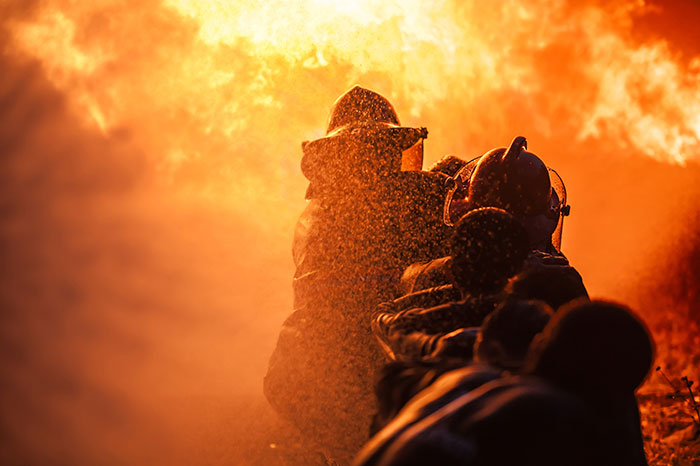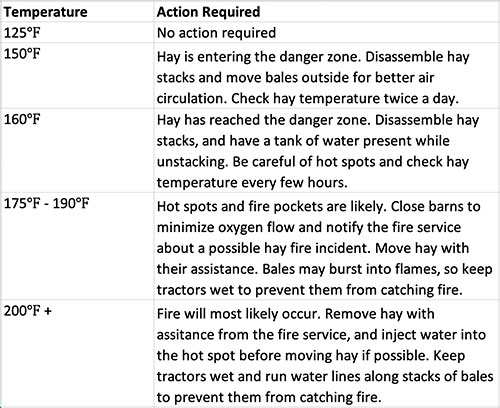Hay fires are a hot topic |
| By Amber Friedrichsen, Associate Editor |
|
|
 Stories about hay fires often serve as cautionary tales, but these incidents can quickly become a burning reality. Storing wet forage incites bacterial activity in hay bales and stacks, which can cause excessive heating. If hay gets too hot and is exposed to oxygen, it may spontaneously combust. In a recent issue of the C.O.R.N. Newsletter from Ohio State University Extension, a team of specialists explain that if hay is at 20% moisture, mesophilic bacteria that prefer moderate conditions can cause temperatures to rise between 130°F to 140°F. At this point, thermophilic bacteria that thrive in the heat begin to multiply, and hay temperatures continue to escalate. Be proactive One way to inhibit this bacterial growth is to treat wet forage with propionic acid while baling; however, there is still a risk of heating even if the organic acid is used. Propionic acid is most effective when it is applied to forage at or below 25% moisture, but effectiveness begins to vary when moisture reaches 25% to 30%. After hay is baled or stacked, monitor its temperature every day. This can be done by using the same kind of cables that are designed to detect the temperature of stored gain, or by inserting a long probe thermometer into the center of the hay. If neither of these devices are available, take a 3/8- to 3/4-inch pipe and cut it to a point. Drill 3/16-inch holes into one end of the pipe, tie a thermometer to a string, and lower it to the bottom. Then put the pipe in a hay bale or stack for at least 10 minutes to get an accurate reading. “A less accurate method is to leave a pipe in the stack all day and if it is too hot to hold in your hand when it is removed, you are at risk of fire,” the extension specialists add. Take action If temperatures read more than 150°F, hay is approaching the danger zone. The extension specialists recommend checking hay twice a day until temperatures stabilize. In the meantime, disassemble stacks and move bales outside the barn so air circulation can cool them. The danger zone starts at 160°F. This is when hot spots and fire pockets can burn holes through the inside of a stack. If you need to climb on stacks, take precautions when handling hay to avoid falling into a hollow area. “Use planks to spread out your weight while walking on the stack and have a harness system attached to the ceiling in case you fall into a burned-out cavity,” the extension specialists recommend. “Work in pairs with someone on the ground within voice range to assist you if you find yourself in a bad situation.” Contact the local fire department if hay temperatures reach 175°F or higher and do not attempt to remove hay from a barn without their assistance. At 200°F, a fire will likely occur if it hasn’t already. Keep tractors and other machinery wetted down so they don’t burn, and set up a water hose near relocated hay in case the fire spreads.   Amber Friedrichsen Amber Friedrichsen is the 2022 Hay & Forage Grower editorial intern. She currently attends Iowa State University where she is majoring in agriculture and life sciences education-communications and agronomy. Friedrichsen grew up on her family’s diversified crop and livestock farm near Clinton, Iowa. |
